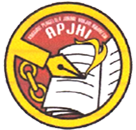Measuring Ecological Loss as State Loss in Illegal Mining Crime
DOI:
https://doi.org/10.29303/ulrev.v9i1.390Keywords:
Human rights, Ecology, Illegal miningAbstract
The environment is one of the most important elements of life for human life whose rights are guaranteed following Article 28 H of the 1945 Republic of Indonesia Constitution. Therefore, the environment shall be maintained as an ecosystem from pollution and damaged. This research aim is to measure the ecological losses arising from illegal mining crimes as a state loss. This research is normative legal research that uses juridical analysis using a conceptual and a statutory approach. The study results found that ecological losses from illegal mining crimes can be calculated or used as state losses due to damage or loss of function of the environment due to illegal mining which is detrimental to society and the state. Therefore, incorporating ecological damage as a state loss may maintain human rights and environmental rights.
References
Bibliography at the end of the manuscript should be written in APA (American Psychological Association) Citation Style. All publications cited in the text should be included as a list of Bibliography, arranged alphabetically by author.
Books with an author:
Robby Surya Rusmana. (2017) Perizinan Pertambangan Rakyat dan Pengawasan di Kabupaten Pesisir Barat, Lampung:Universitas Lampung.
Endang Sutrisno. (2007), Bunga Rampai Hukum dan Globalisasi. Yogyakarta : Penerbit Genta Press.
Soemitro. (1998) . Metodologi Penelitian Hukum dan Jurimetri. Jakarta: Ghalia Indonesia.
Majda El-Muhtaj, (2008), Dimensi-Dimensi Ham Mengurai Hak Ekonomi, Sosial, Dan Budaya, Jakarta : Pt Raja Grafindo Persada.
Philip Alston, (1982) A Third Generation of Solidarity Rights: Progressive Development or Obfuscation of International Human Rights Law, Netherlands International Law Review, Vol 29, No. 3, hlm. 307- 322; sebagamana ada dalam Knut D. Asplund, Suparman Marzuki, Eko Riyadi (Penyunting/Editor);, (2008) at.al.--- Yogyakarta: PUSHAM UII, h. 14 “ 17
Weston dalam Satya Arinanto, Hak Asasi Manusia dalam Transisi Politik di Indonesia, Jakarta: Pusat Studi Hukum Tata Negara Fakultas Hukum Universitas Indonesia, 2008, h. 80
Volume 5 Nomor 1 Desember 2018 Page: 761“ 770 Doi: Http://Doi.Org/10.5281/Zenodo.1683714 Eksistensi Hukum Lingkungan Dalam Membangun Lingkungan Sehat Di Indonesia Laurensius Arliman S*)Hlm. 763
Hak Atas Lingkungan: Sebuah Pengantar Diskusi1 Agung Wardana. Hlm 123-125
Journal articles:
Abdurrahman Supardi Usman. (2018). Lingkungan Hidup Sebagai Subjek Hukum : Redefinisi Relasi Hak Asasi Manusia Dan Hak Asasi Lingkungan Hidup Dalam Perspektif Negara Hukum, Jurnal Legality, V26n1.
Trisnia Anjami, (2017) The Social Impact Of Illegal Gold Mining In The Village Sungai Sorik Kecamatan Kuantan Hilir Seberang Kabupaten Kuantan Singingi, Jurnala JOM FISIP, Vol.4, No.22.
Rochmani, (2015) Dalam Priya Tandirerung Pasapan. Hak Asasi Manusia Dan Perlindungan Lingkungan Hidup. Paulus Law Journalvolume 1nomor 2, Maret 2020. E-Issn : 2722-8525.
Riana Susmayanti. Refleksi Keadilan Lingkungan Dalam Pancasila Pada Putusan Mahkamah Agung Nomor 3555k/Pdt/2018. 366. Prosiding
World Wide Web:
https://www.wartatambang.com/read/1169/maraknya-tambang-ilegal-di-indonesia--menelisik-faktor-penyebab-dan-dampaknya.html diakses pada tanggal 24 Oktober 2024.
Peraturan Menteri Lingkungan Hidup Nomor 7 Tahun 2014 tentang Kerugian Lingkungan Hidup Akibat Pencemaran dan/atau Kerusakan Lingkungan Hidup.
Undang-Undang Nomor 3 Tahun 2020 tentang Pertambangan Mineral dan Batu Bara, Lembar Negara Republik Indonesia Tahun 2020 Nomor 147
Downloads
Published
How to Cite
Issue
Section
License
Copyright (c) 2025 Prio Harry Subekti, Nabiatus Sa'adah

This work is licensed under a Creative Commons Attribution-NonCommercial 4.0 International License.
Copyright holder by Author














